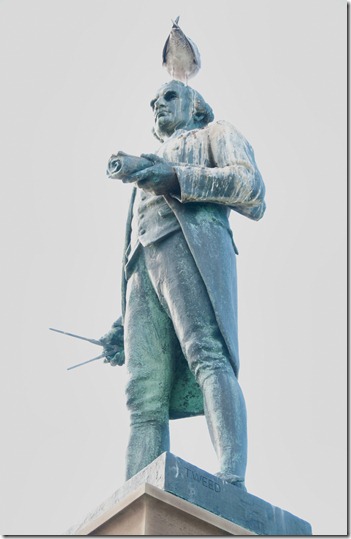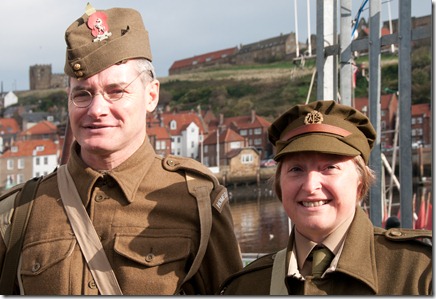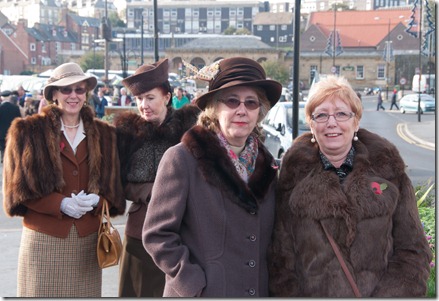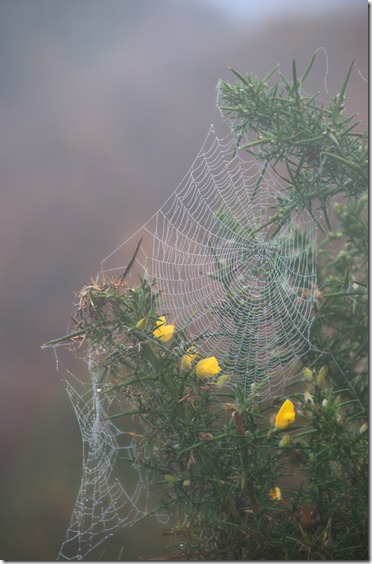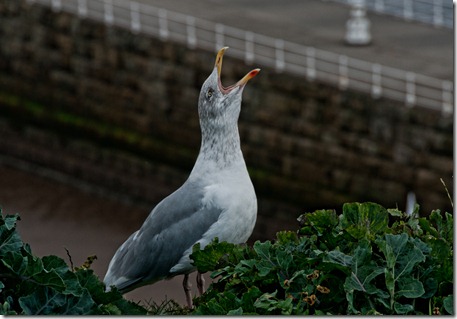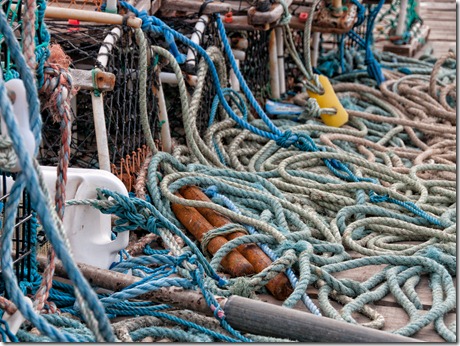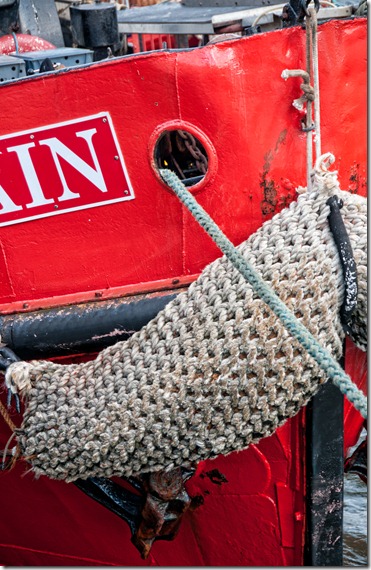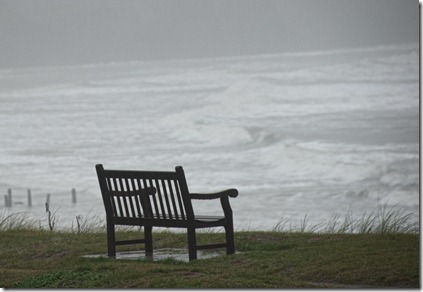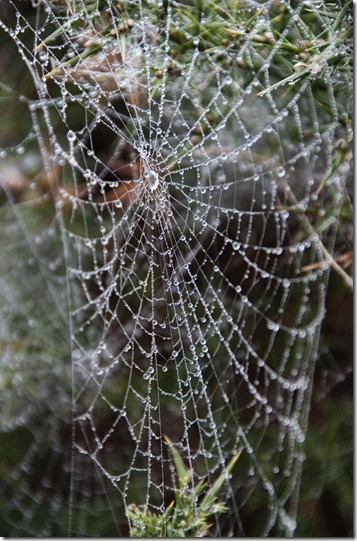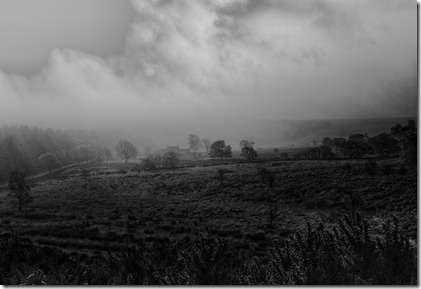For the first part of this exercise, I’ve chosen the following three sets of images. The camera was in Aperture priority with a fixed aperture of f/10, to make it easier to calculate the exposure stops for each image. I used daylight white balance for each shot.
The first two images are of a Linden tree in our garden – its leaves are turning nicely now and the berries are looking good.
Full Sun
With the sun still low in the sky (as it is most of the time just now) there’s good contrast and strong colours in this image. The clear blue sky makes a good backdrop too.
Cloud cover
With the fairly thin cloud in front of the sun, an additional 3.5 exposure stops were required. It’s produced a clearer image, with no burn out, but the colours are much more muted. The overall colour in the foliage and berries seems to be bluer than the previous image, even though the sky is not so prominent.
So it depends on whether strong, harsher colour and high contrast is preferable to the flatter image with better detail. My personal preference, in this case, is the latter.
In Whitby we now look at Captain Cook’s monument.
Full Sun
Again, the low sun has provided the lighting with fairly high contrast, due to the dark shadows. His dark eyes give him a look of determination. The bright light has caused burn out on the ever present gull.
Cloud Cover
With cloud cover has meant an extra 2.5 exposure stops and has produced quite a flat image. His attire now looks much softer and his eyes look tired rather than determined. Of course it could be the gull which is making him tired – it certainly doesn’t do anything for his jacket and may be responsible for some of the verdigris, which incidentally looks bluer than in the previous image.
I think I prefer the first image in this pair. I think monuments in general should look as though they’ve been carved, so higher contrast is preferable – and I can’t think that Captain Cook was a softy!
It was the Wartime weekend in Whitby, so lots of people in uniform and period dress, together with check points, ancient vehicles, crooners, big bands and general good fun.
Full Sun
The Home Guard and the Air-raid Prevention Warden were happy to pose in the sunlight. The side lighting has resulted in a not very complimentary image. The light is just too harsh.
Cloud cover
The diffusing effect of the cloud cover has made the features of these society ladies much softer. An altogether much more pleasing result even though the overall colour is more muted and has a blue tinge.
The skin tones in the first image look a lot healthier, but I think the softer lines in the second image are much more desirable for this type of image.
The following images from my library demonstrate how softer, diffused light, due to the weather can be used to good effect.
Four Oaks
The lower light level has produced this relatively low contrast image, with very little burn out. A harsher light would have almost certainly caused loss in the white areas. The detail has therefore been maintained throughout the image. The eye is drawn to the trees because of the triangle made by the converging roots
Misty Webs
The very low cloud has made the spider web glisten with water droplets. Although the background has become lost in the mist I think this image really works. The muted colours with the enhanced detail work well with the misty background, while the points of yellow and the droplets in the webs give it so much interest.
Obviously the lighting makes this image. Without the soft light this just wouldn’t work.
An overcast day was used to capture these images around the harbour:
Dull Gull
Gulls are difficult to photograph on bright days. Their white plumage tends to get burned out in an image. Look at the detail that can be seen in this immature bird on a dull day – individual feathers are easily distinguished and the eye is very clear. The vegetation also has more detail than I’d normally have expected.
Overcast Pots
The overcast sky has provided a light where shadows are almost non-existent. On a bright day the hard shadows would have caused a lot of the detail seen here to be lost. The ropes in this image seem to have more depth; the weights and floats stand out and more detail can be seen in the knitting of the pots. Using this light has made a simple scene come to life.
Chieftain Fender
The bow fender on this steel angling boat ‘chieftain’ is better seen in this overcast light. If it were taken on a sunny day the shadows in the knotted rope would have been much darker, so the detail would be lost. Also the red paint would be much brighter on a sunny day which would distract the eye from the fender. The colours here are quite muted, so details like the welded patches below the fender become more obvious than they would if the colour was more vibrant.
The wet weather images were a little more challenging.
Wet Seat
There weren’t many people on the beach today. This view of a favourite seat has a lot of feeling to it. Look at the raging sea through the rain and mist; See how the grass is bending in the wind and the water droplets hang on the seat. You can feel the cold, but if you can feel it that’s good – an image should evoke some emotion after all!
Wet Web
The feeling that this evokes in me is one of wonder. The rain shows the work that’s gone into this web which holds the droplets like jewels. A heavy mist can have a similar effect, but not as pronounced as this. In any dry / bright conditions this image would not be available. The lighting conditions help to give more detail too. Worth getting wet for!
Moors rain
The lighting conditions during heavy rain showers created such atmospheric images – muted colours and low contrast. This approaching shower, combined with the selective lighting of the sun through the clouds gives real depth to the view. Don’t you just wish you were comfortably settled inside that farm house? Taken at ISO 100, f/29, 1/45 sec and converted to monochrome (the colours were muted anyway, but I think the monochrome works well)
Many years ago, I was the one who always played in puddles - so why stop now?
Raindrops in puddles can become:
Puddled!
So working with different weather conditions can be really useful, whether it’s to enhance or mute the colour, give more or less depth, or create atmospheric images. The additional highlighting using water droplets and reflections is another bonus.



